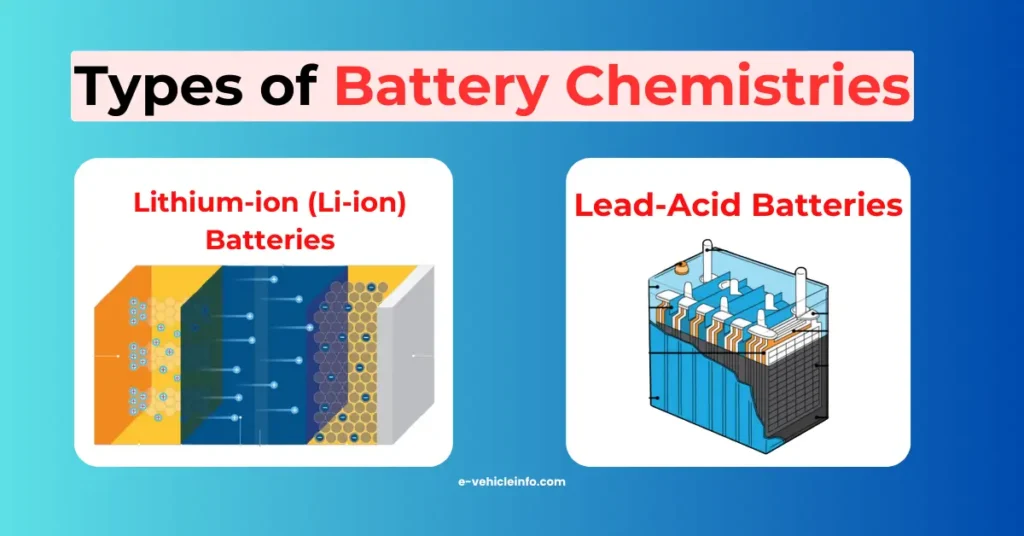
Battery chemistries are the heart of modern energy storage solutions, powering our devices, vehicles, and even homes. These chemistries represent diverse technologies, each with unique materials and mechanisms.
Lithium-ion batteries dominate portable electronics and electric vehicles due to their high energy density and longevity. Lead-acid batteries remain pivotal in automotive and backup power applications with their reliability.
Nickel-cadmium and nickel-metal hydride batteries offer alternatives with good cycle life and lower environmental impact.
Alkaline batteries, with their zinc and manganese dioxide composition, are cost-effective and widely used.
Emerging technologies like solid-state and sodium-ion batteries hold promise for future advancements in energy storage.
Understanding these chemistries is essential for harnessing the power that drives our modern world.
There are several types of battery chemistries, each with its working principles, anode and cathode materials, chemical formulas, and advantages. Here are some of the most common battery chemistries:
Working: Li-ion batteries use lithium ions to move between the anode (typically made of graphite) and the cathode (usually made of lithium cobalt oxide, lithium iron phosphate, or other materials). During discharge, lithium ions move from the anode to the cathode, creating an electrical current.
Cathode Material: Various materials like lithium cobalt oxide (LiCoO2), lithium iron phosphate (LiFePO4), lithium manganese oxide (LiMn2O4), etc.
Chemical Formula: Various, depending on the cathode material.
Advantages:
Working: Lead-acid batteries utilize lead dioxide as the cathode and sponge lead as the anode immersed in a sulfuric acid electrolyte. During discharge, lead and lead dioxide react with sulfuric acid to produce electricity.
Anode Material: Sponge lead (Pb)
Cathode Material: Lead dioxide (PbO2)
Chemical Formula: Pb + PbO2 + 2H2SO4 → 2PbSO4 + 2H2O
Read here – What are the 4 Main Types of Batteries Used in Electric Vehicles?
Working: NiCd batteries have a nickel hydroxide cathode and a cadmium anode separated by a potassium hydroxide electrolyte. During discharge, nickel hydroxide and cadmium react to produce electricity.
Anode Material: Cadmium (Cd)
Cathode Material: Nickel hydroxide (Ni(OH)2)
Chemical Formula: Cd + 2Ni(OH)2 → Cd(OH)2 + 2NiOOH
Anode Material: Hydrogen-absorbing alloy
Cathode Material: Nickel oxyhydroxide (NiOOH)
Chemical Formula: Various, depending on alloy and cathode material.
Anode Material: Zinc (Zn)
Cathode Material: Manganese dioxide (MnO2)
Chemical Formula: Zn + 2MnO2 → ZnO + 2Mn2O3
Comparison table of various battery chemistries, including Lithium-ion, Lead-Acid, Nickel-Cadmium (NiCd), Nickel-Metal Hydride (NiMH), and Alkaline batteries, based on different parameters:
| Parameter | Lithium-Ion | Lead-Acid | Nickel-Cadmium (NiCd) | Nickel-Metal Hydride (NiMH) | Alkaline |
|---|---|---|---|---|---|
| Energy Density (Wh/kg) | High | Moderate | Moderate | Moderate | Moderate |
| Cycle Life | High | Moderate | Moderate | Moderate | Moderate |
| Self-Discharge Rate | Low | Moderate | High | Moderate | Low |
| Environmental Impact | Low | Moderate to High | Moderate to High | Moderate to High | Moderate to High |
| Cost | Moderate to High | Low to Moderate | Moderate | Moderate | Low |
| Common Applications | Electronics, EVs | Automotive, Backup, Power, UPS | Portable Electronics, Power Tools, Aviation | Portable Electronics, Power Tools, Medical Devices | General Purpose, Devices, Toys |
| Anode Material | Graphite | Lead | Cadmium | Hydrogen-absorbing alloy | Zinc |
| Cathode Material | Various | Lead Dioxide | Nickel Hydroxide | Nickel Oxyhydroxide | Manganese Dioxide |
| Typical Voltage (V) | 3.6 – 3.7 | 2.0 – 2.2 | 1.2 | 1.2 | 1.5 |
This post was last modified on January 15, 2025 1:32 pm
The future of mobility in India has taken a major leap forward. Omega Seiki Mobility (OSM), led by Founder Uday…
Electric bikes are no longer just about saving fuel or going green. Today, they’re also about power, safety, and smart…
The global shift toward electrification is reshaping industries, with batteries at the core of this transformation. Among emerging technologies, lithium…
Summary: Bengaluru-based EV startup Simple Energy has raised $10 million in a bridge round led by existing investors. The funds…
Montra Electric, the clean mobility brand of the Murugappa Group, has unveiled its state-of-the-art electric heavy commercial vehicle (eHCV) manufacturing…
Kinetic India marked a major milestone in the country’s clean mobility transition today as its battery arm, Range-X, rolled out…
This website uses cookies.